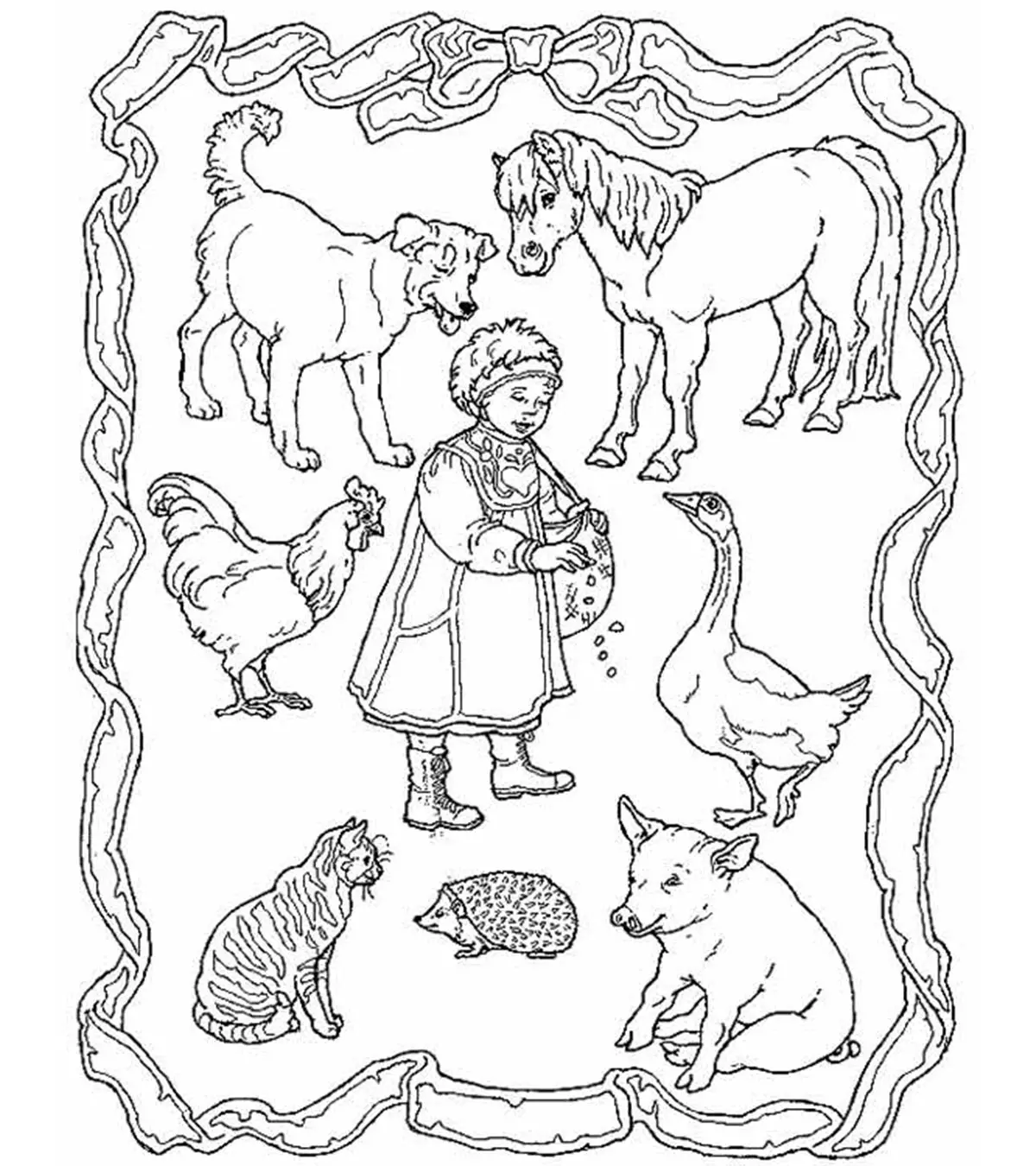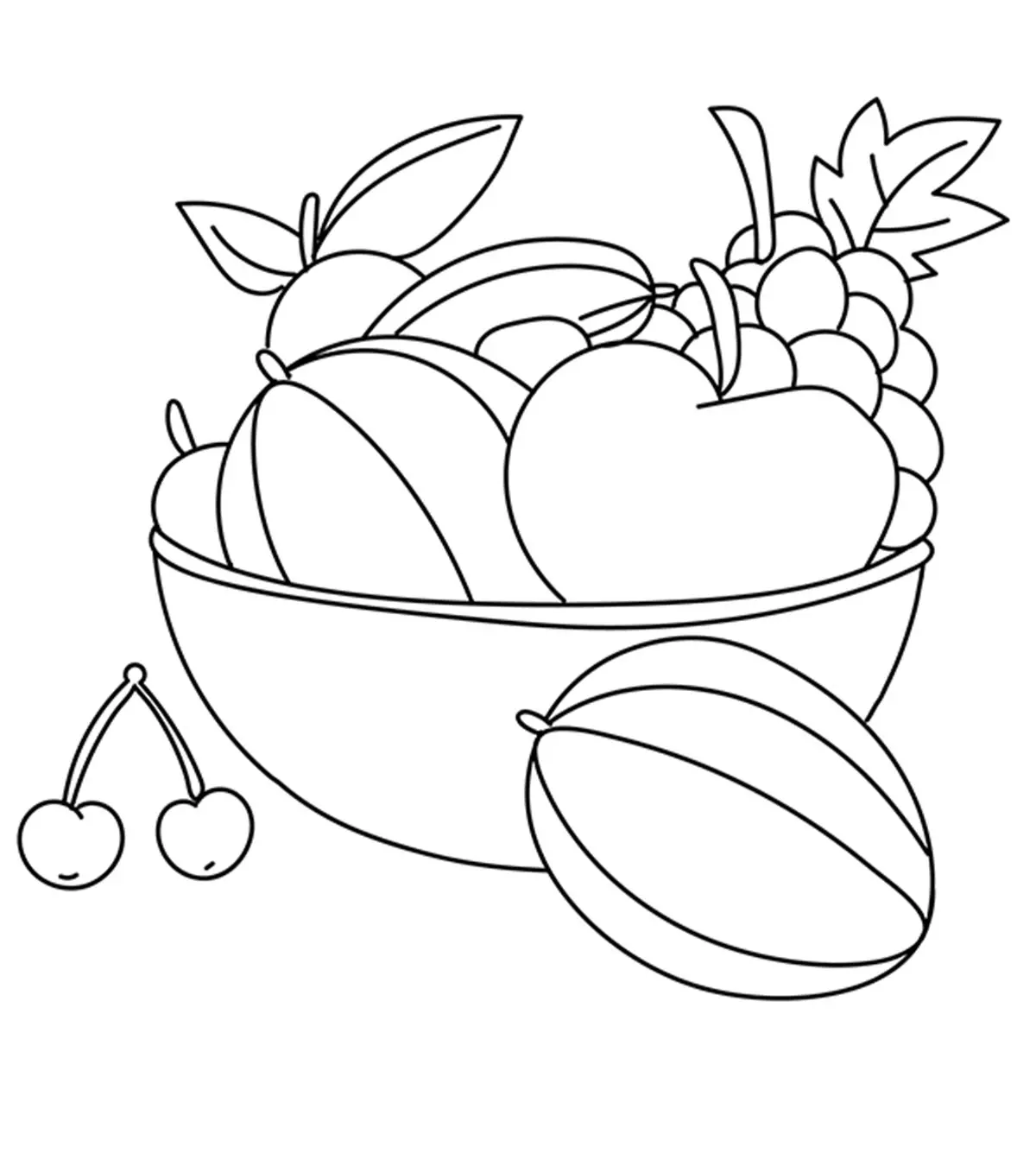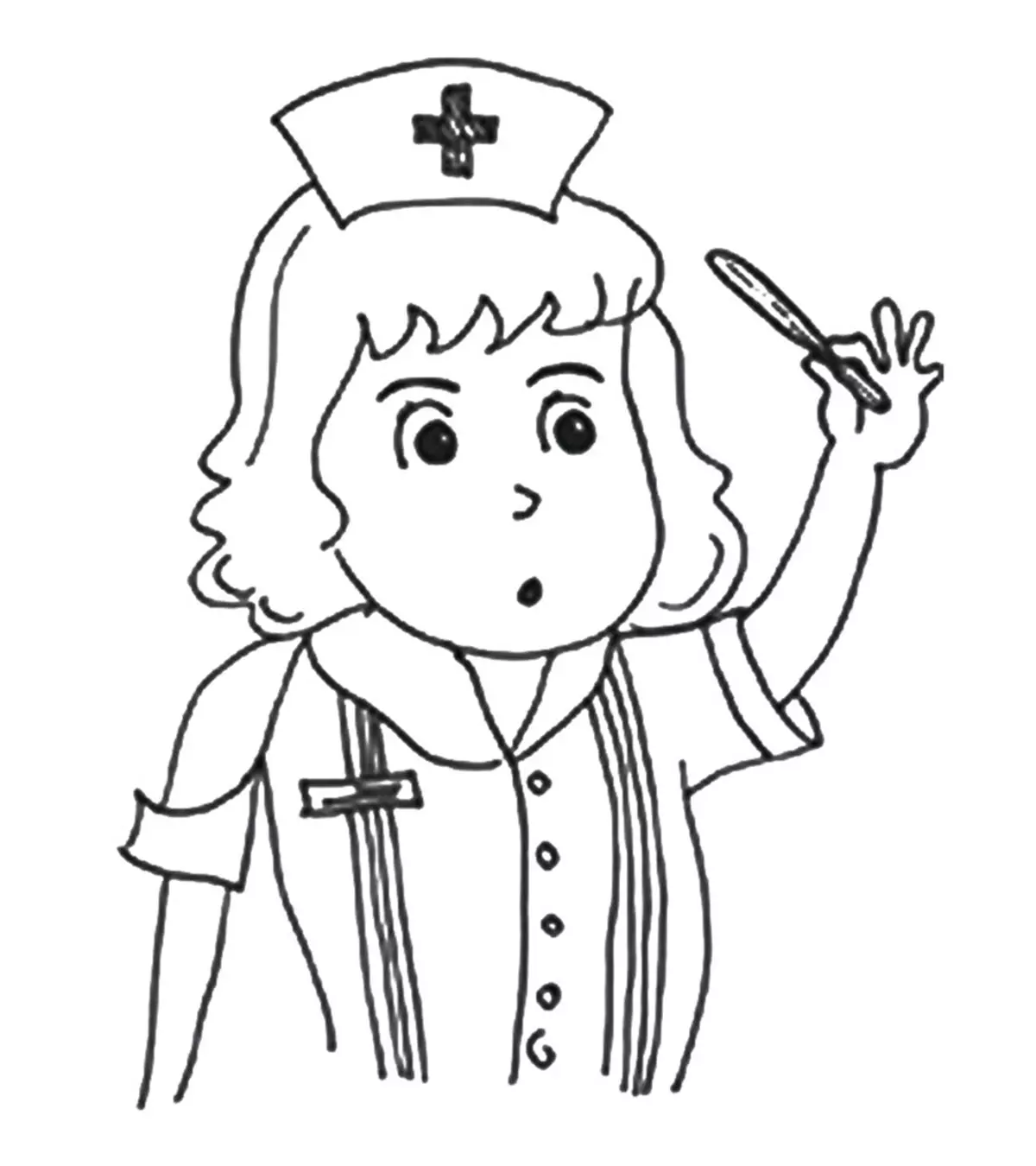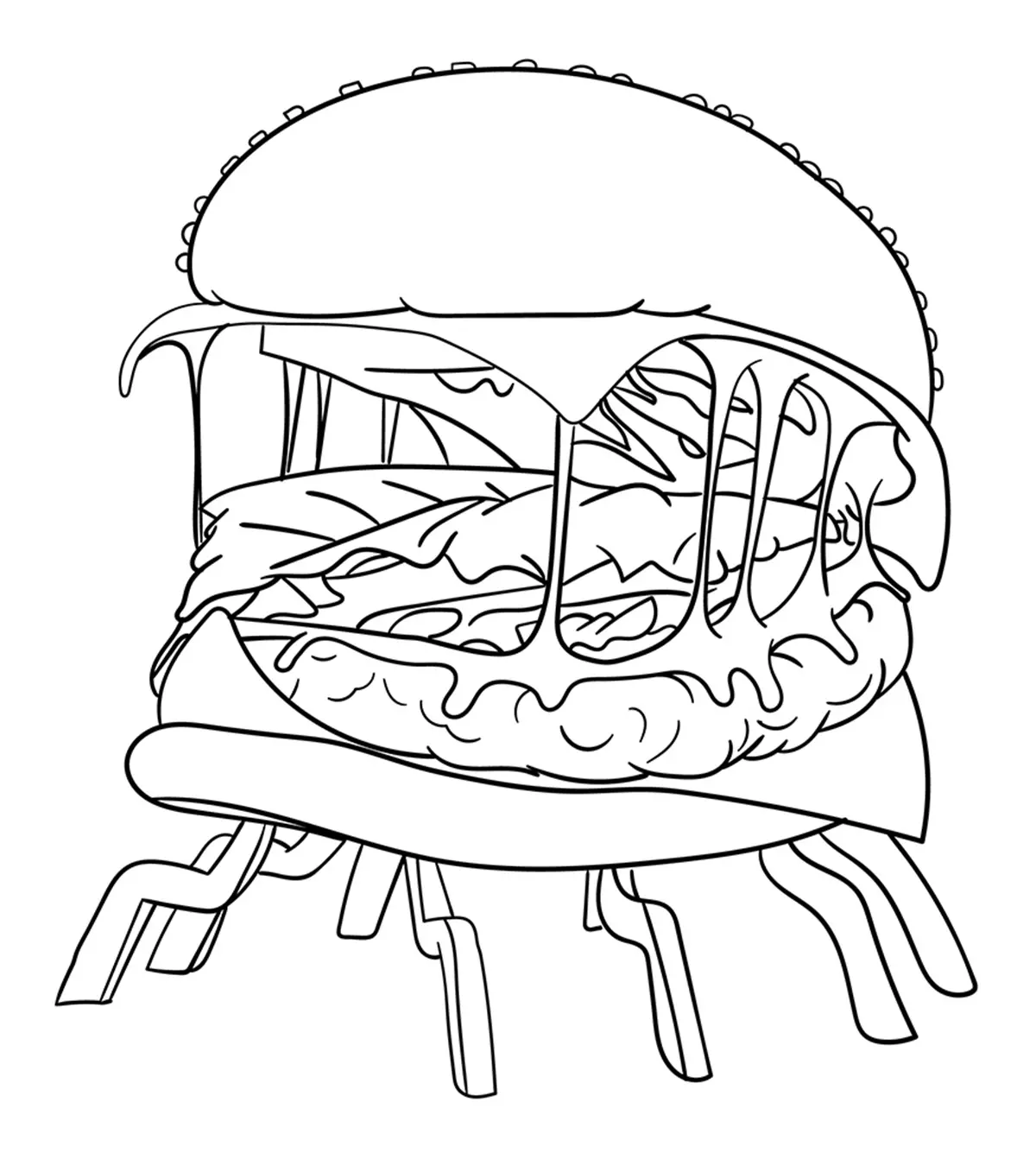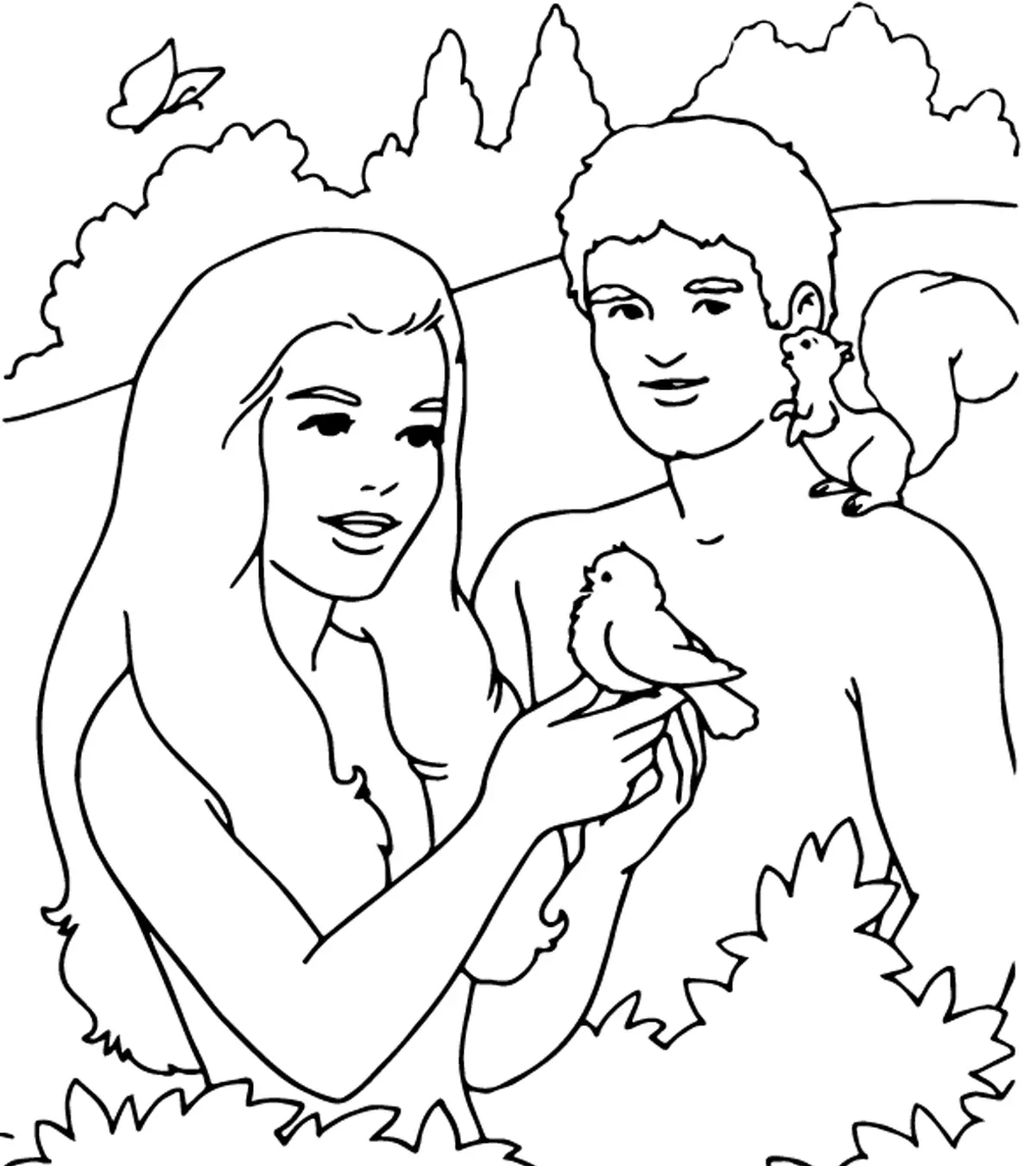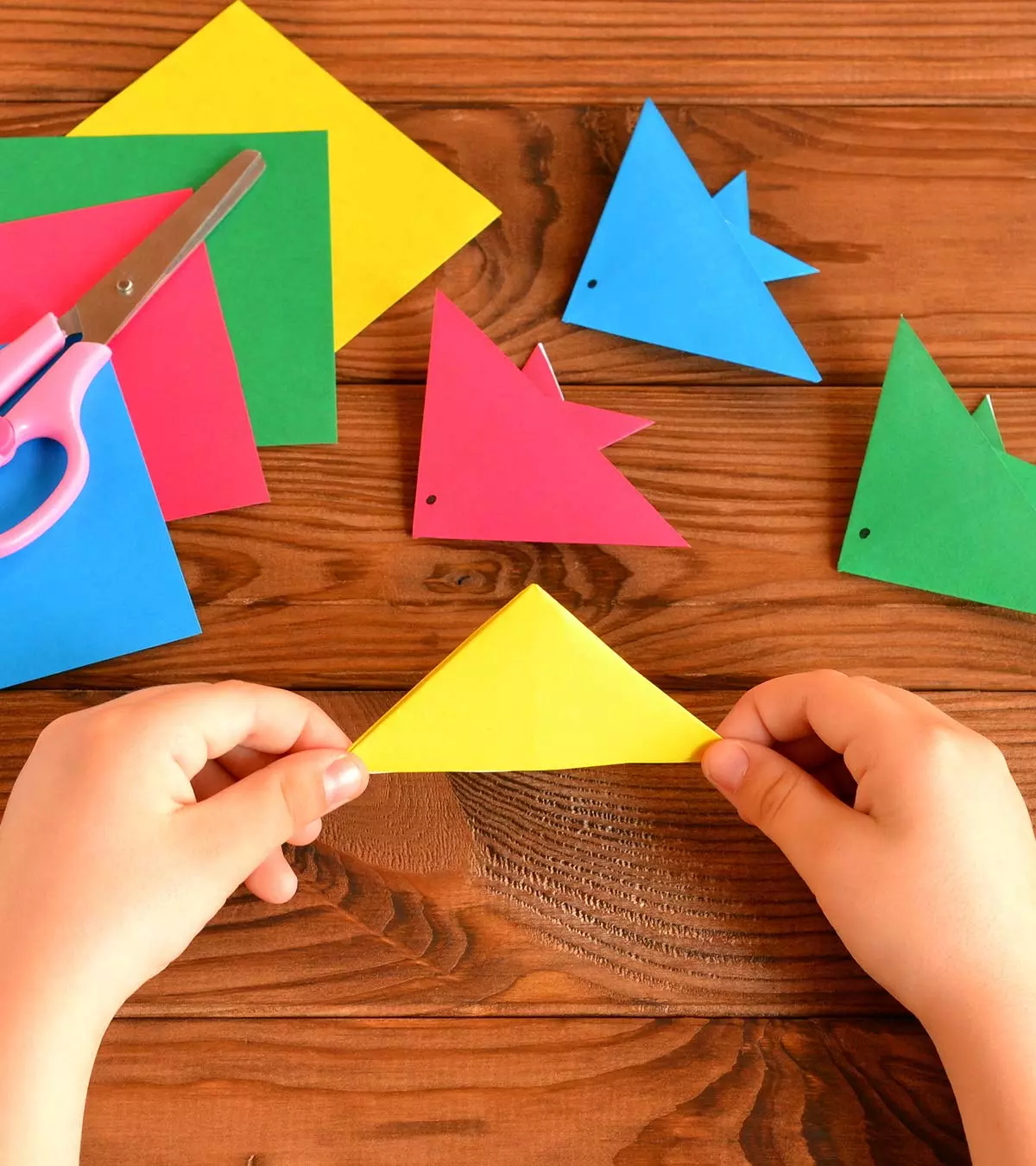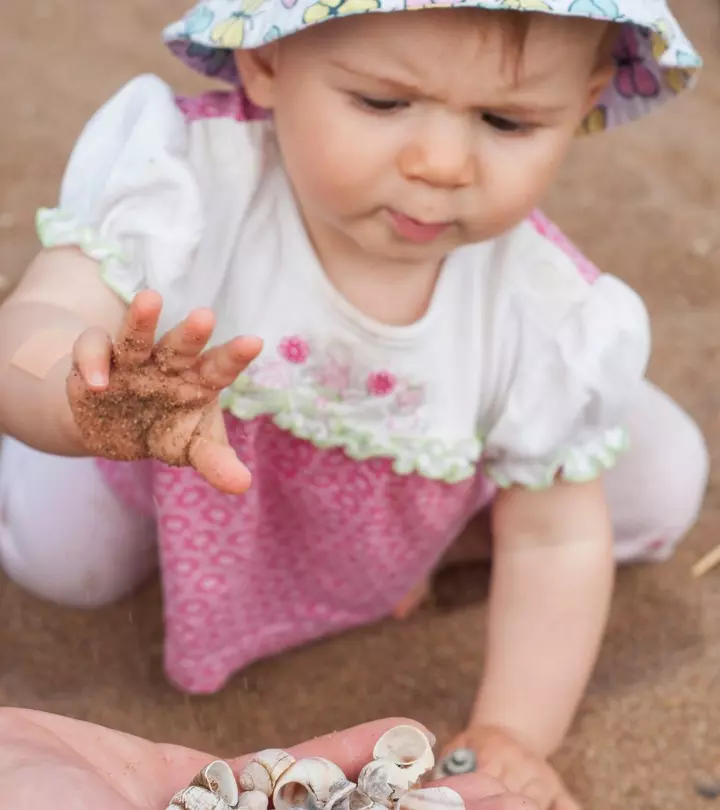
Image: ShutterStock

Symbolic play is a creative activity where toddlers and babies use an object or item to represent or symbolize something else (1). This symbolic representation helps a child convey and depict thoughts and ideas through words, sound, and play (2). A baby talking over a toy phone and racing a block like a car are a few examples of symbolic play.
Symbolic play is a crucial cognitive development milestone that lays the foundation for developing other important skills, including social skills and language, in children (3) (4). Hence, understanding its importance and taking the initiative to strengthen it are essential for a child’s overall development.
In this post, we discuss the importance of symbolic play for children and offer you tips on encouraging your child to engage in symbolic play. So, read on to make the most out of your child’s playtime.
Key Pointers
- Symbolic play is when babies and toddlers use an object to imagine and play.
- The skills gradually develop between two and three years of age as the brain develops at this age.
- Symbolic plays teach children to observe, know, and mimic their surroundings and evoke creativity and imagination.
When Do Symbolic Play Skills Appear?
Symbolic play skills appear typically between two and three years of age(5)
. However, this development doesn’t happen suddenly. Instead, it’s a gradual process that passes through the following stages (6).
1. Baby play stage (3 to 18 months)
Most babies begin imitating sounds, expressions, and movements as early as three months of age (7). This important developmental milestone prepares them to observe, understand, and follow their surroundings (4). However, at this age, they can’t use objects for imitation.
Over the next few months, their ability refines, and by eight months of age, they experiment with imitating sounds and making noises by banging and shaking toys. They are also familiarizing themselves with people, objects/things, ideas, and thoughts. Then, as the baby steps into toddlerhood, they enter the pre-symbolic play stage.
2. Pre-symbolic stage (18 to 22 months)
Between 18 and 22 months, toddlers enter the pre-symbolic play stage, where they participate in functional play or solitary play and mimic routine, everyday activities, or familiar people. For instance, toddlers may brush their doll’s hair as you do theirs or pretend to drink from a cup and make slurping noises. Thus, a toddler will use a real object or prop to represent another object, thing, or activity.
By the time they approach their second birthday, they gradually transition to the symbolic play stage. It means now the toddler will use one object to represent another object more frequently. For instance, a toddler will use a paper towel roll as a phone and pretend to call someone, or race a block on the floor like a car.
3. Symbolic play stage (24 months to 3½ years)

Image: Shutterstock
Toddlers between 24 months to 3½ years engage in make-believe play with a planned and sequenced theme. As per the theme, they assign roles to themselves and others. Additionally, now they can imagine an object and use it in the play when the actual object is absent. For instance, a toddler may treat colorful magnets as pizza slices and pretend to sell them to their play companion (associative play). Most toddlers also begin using emotions while playing during this period.
 Point to consider
Point to consider4. Advanced symbolic play stage (4 to 6 years)
Children between four and six years are mature enough to participate in symbolic play with abstract themes, such as pirates and superheroes. These themes are usually based on events or incidents that they have heard but never experienced. Hence, they pick a theme and then weave a story around it using their imagination and creativity.
Then, based on the story, they assign roles/characters to themselves and others. During improvisation, they would even perform multiple roles themselves. To convey instructions, thoughts, and ideas to play companions, they now use verbal and non-verbal communication cues. For instance, a child pretending to be a cashier in the shop might say to their friend to be the customer and ask them to inquire about different items’ prices.
Why Is Symbolic Play Important?
Symbolic play teaches a child to observe, understand, and mimic their surroundings using structured thinking, creativity, and imagination (8). This ability is essential to overcome impulsiveness and have a thought-driven behavior, which, in turn, helps children develop in other aspects of their lives, such as the following.
- Cognitive development: When toddlers engage in symbolic play, they learn about real-life situations and creative ways to deal with them. This learning boosts their analytical thinking, which helps them find solutions to problems and overcome hurdles. Symbolic play is one of the cognitive activities for toddlers that provide them with an opportunity to experiment and learn through action.
- Language development: Symbolic play teaches a child about symbolic function. It means a child learns that one object can be used as a symbol to represent something else. For instance, letters are used to symbolize sounds and words to symbolize emotions. This learning is crucial for a child to build vocabulary, identify objects and use them as symbols, learn about gestures and use them for communication, and follow/give verbal instructions in a specific order (9).
- Social-emotional development: Most children indulge in make-believe activities with play companions (peer play). It allows them to share ideas, imagine and create a story, negotiate, take turns, and assign roles. Then, as the story demands, they switch roles or take leads and behave as adults do. All these attributes help a child become more skilled with emotional control and act responsibly. Also, when a child plans a story and acts it out, it can ease their stress, boosts self-esteem and confidence, and improve their storytelling skills.
- Motor development: A baby as young as eight-month-old picks objects and tries to imitate what the other person is doing. Such activities refine their fine and gross motor skills. Then, as the baby grows, they begin picking, holding, and stacking items, such as blocks, one over the other to create objects, further polishing their motor skills.
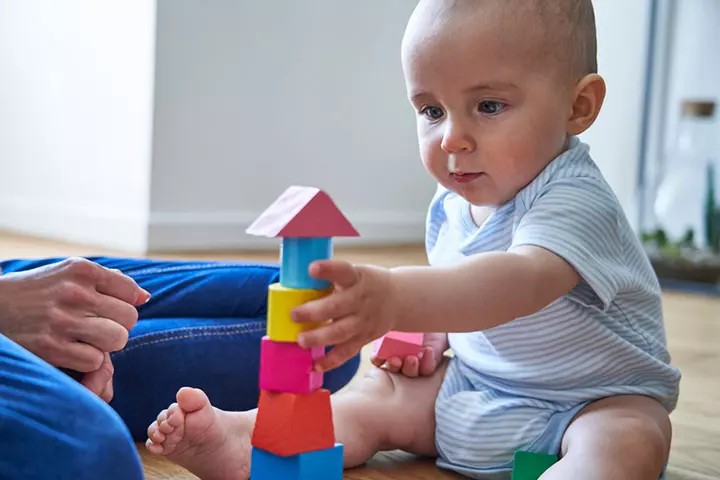
Image: Shutterstock
Since symbolic play can benefit overall development, it’s important to encourage your child to indulge in symbolic play from a young age. The following section shares some helpful tips for getting involved with them.
 Do remember
Do rememberSteps To Encourage Symbolic Play
Here are some age-appropriate activity ideas that can foster your child’s interest in symbolic play.
1. Baby play stage (3 to 18 months)
Give your baby various toys, such as rattles, toy ducks, squeeze balls, and stacking cups
. Then, sit with them and move the toys in different directions or tip, bang, and roll them on different surfaces to hear what sounds they make. Then, as the baby grows, provide them with toy cars, trucks, and bikes that you both can move back and forth and make fun noises like “vroom…vroom” or “beep…beep.”
2. Pre-symbolic stage (18 to 22 months)
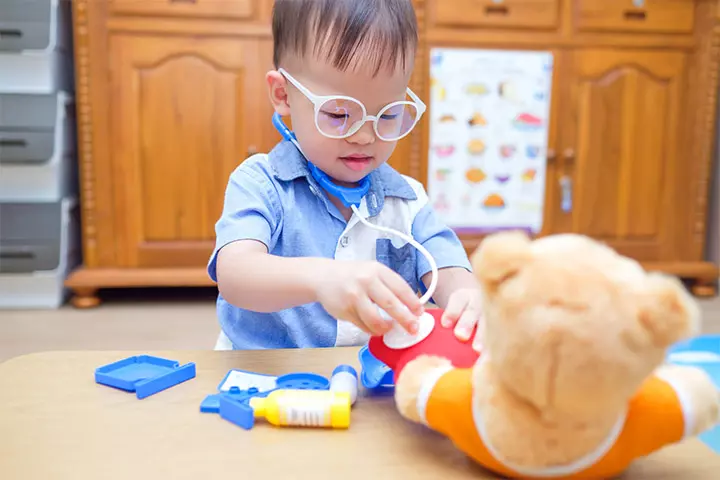
Image: IStock
Toddlers in this age group are already imitating familiar people and activities. Hence, it’s the right time to introduce your toddler to simple make-believe toys. You can buy make-believe toys from the market or use household items to pretend to play. Whatever you choose, remember to participate in the activity to make it interactive and fun.
For instance, you can hold a birthday party for your toddler’s favorite toy or a picnic with their toys. Alternatively, you can give them some household items, such as a bowl and spoon, to pretend they are mixing the cake batter.
3. Symbolic play stage (24 months to 3½ years)
At this age, a toddler is skilled enough to follow a sequence and theme while playing. Besides, they can effectively imagine and symbolize an object for the other. However, they still imitate things that they have seen or experienced. So, provide them with household items, such as reusable plastic or tin containers, mugs, and lids, and watch them recreate a scene from a cartoon series or movie they had watched. For instance, they may use the items to create a miniature departmental store or display items like in a backyard sale that they had seen last weekend.
4. Advanced symbolic play stage (4 to 6 years)

Image: IStock
At this stage, your child is filled with fantasy, imagination, and creativity. They can create structured stories and assign roles to themselves and others. It’s why they can use almost any items in the house to make an object they would need for their play. So, provide your child with old clothes, shoes, hats, baskets, and other household stuff that they can use to create a story.
For instance, a child might create a play where they pretend to be the superhero and ask the other child to be the thief. Then, they use a tablecloth to dress like the superhero and use an old stick as their sword to fight the thief. Their creativity now is boundless, and they can use the same items to create different games or stories. As with any play, see how you, as the parent, can play right along. Remember to be carefree, fun, and flexible.
 Did you know?
Did you know?What If A Child Doesn’t Indulge In Symbolic Play?
Symbolic play is a crucial developmental stage, but not every child passes through it at the same time. Some children may pass the stage early, while others may pass it later. Yet, several parents worry about the delayed appearance of symbolic play skills. It is primarily because a delay or deficit in symbolic play is often associated with autism spectrum disorders (ASD) (10).
Hence, consult a pediatrician if you are worried that your preschooler doesn’t indulge in symbolic play, always plays alone, or does specific activities repeatedly. They will evaluate the child and let you know if there’s a concern.
Frequently Asked Questions
1. What is Vygotsky’s theory of play?
According to Vygotsky’s theory of play, children should engage in dramatic play, rather than random play, including imaginative play, acting roles, and following rules for individual roles in the play. Furthermore, this type of play is believed to enhance a child’s emotional, creative, and social skills (11).
2. Is there any difference between symbolic and pretend play?
As per experts, pretend play and symbolic play are similar. Since in pretend and symbolic play, children play with several objects and tend to represent things symbolically, both types of play have a similar intent (12).
3. How can teachers incorporate symbolic play into classroom activities and lessons?
Set up designated play stations in the classroom where students can engage in symbolic play. Provide them with props, costumes, and materials related to different themes to spark their imaginations. Encourage students to interact with the puppets and engage in dialogue, storytelling, or problem-solving scenarios. Integrate symbolic play into specific lessons or subjects, allowing students to create stories or narratives using their imagination.
4. Can children with developmental delays or disabilities engage in symbolic play?
Studies show that children with developmental delays like autism may display a restricted capability to engage in symbolic play. However, it does not mean they cannot participate in it. In fact, symbolic or pretend play for kids can help expand their motor, cognitive, and social skills. Studies have also revealed that the level of engagement in symbolic play varies depending on the severity of the symptoms of the specific disability (15) (16).
5. How does cultural background impact the development of symbolic play?
Different cultures have unique beliefs, values, and practices that shape how a child sees the world and understands concepts. Some cultures prioritize educational activities, while others value imaginative and creative play. Cultural practices and norms may also influence the types of play materials and toys children use, the roles and themes they choose for role play, and the level of adult involvement in play interactions. Some cultures may emphasize group interactions, while others may prioritize individual play and incorporate elements from their cultural background into their play.
6. What are some examples of symbolic play?
Some of the most common forms of symbolic play include using a cardboard box as a car or spaceship and playing house. Some children may imagine a blanket as a fort, treat a sofa as an airplane seat, use a banana as a telephone, or pretend to cook with wooden blocks as ingredients. They may also wear a helmet and walk in the backyard, pretending they are walking on the moon.
Symbolic play is when a child starts to use one object to symbolize or represent something else while playing. This is the time when imagination and creativity begin to develop. Offering foods or cups of coffee to the doll or their toy is symbolic play. It helps in cognitive, social-emotional, and motor development in children. Toddlers between two years and preschool age often indulge in symbolic plays. The symbolic play’s theme can be deduced from the words surrounding them.
Infographic: Using Objects To Portray Real Things In Symbolic Play
The hallmark of symbolic play is the use of everyday objects by the baby to depict other items, which they would have usually observed parents using. Here is an infographic to describe how your baby or toddler may perceive various things around them as toys and use them to portray the function of other items.
Some thing wrong with infographic shortcode. please verify shortcode syntax
References
- Symbolic play
https://dictionary.apa.org/symbolic-play - Symbolic representation
https://dictionary.apa.org/symbolic-representation - Developmental Milestones
https://www.acecqa.gov.au/sites/default/files/2018-02/DevelopmentalMilestonesEYLFandNQS.pdf - A first step in learning by imitation baby brains respond to another’s actions
https://www.washington.edu/news/2013/10/30/a-first-step-in-learning-by-imitation-baby-brains-respond-to-anothers-actions/ - Developmental Milestones of Symbolic or Pretend Play
https://www.childdevelopmentprograms.ca/ - Foundation: Symbolic Play
https://www.cde.ca.gov/wafalert.html?_event_transid=86bd800e9439d193b9df002254442bbc18fe29f724619b2395a7e5fe45707ec4 - Developmental Milestones: 3 Months
https://www.healthychildren.org/English/ages-stages/baby/Pages/Developmental-Milestones-3-Months.aspx - Li-Yuan Wu; (2013); Children’s Play And Symbolic Representation.
https://www.semanticscholar.org/paper/CHILDREN%27S-PLAY-AND-SYMBOLIC-REPRESENTATION-Wu/2981ff4b98c4dad8442e3d2eab4edd3594709fac - Developing Pretend Play
http://ir.ncue.edu.tw/ir/bitstream/987654321/17979/1/2060200310003.pdf - Connie Kasari et al Joint attention and symbolic play in young children with autism: a randomized controlled intervention study
https://pubmed.ncbi.nlm.nih.gov/16712638/ - Janine Hostettler Scharer; (2017); Supporting Young Children’s Learning in a Dramatic Play Environment
https://www.researchgate.net/publication/321636037_Supporting_Young_Children’s_Learning_in_a_Dramatic_Play_Environment - The Land of Make Believe: How and Why to Encourage Pretend Play
https://www.hanen.org/helpful-info/articles/the-land-of-make-believe.aspx#:~:text=Pretend%20play%20is%20also%20known - Symbolic Play.
https://birthto5matters.org.uk/wp-content/uploads/2025/03/Symbolic-play.pdf - IMPORTANCE OF PRETEND PLAY.
https://centerforparentingeducation.org/library-of-articles/baby-through-preschool-articles/importance-of-pretend-play/ - Yan Grace Lam; (2014); Symbolic Play in Children with Autism.
https://www.researchgate.net/publication/280094241_Symbolic_Play_in_Children_with_Autism - Francisco González-Sala et al.; (2025); Symbolic Play among Children with Autism Spectrum Disorder: A Scoping Review.
https://www.ncbi.nlm.nih.gov/pmc/articles/PMC8470741/
Community Experiences
Join the conversation and become a part of our nurturing community! Share your stories, experiences, and insights to connect with fellow parents.
Read full bio of Dr. Caroline Hexdall
Read full bio of Swati Patwal
Read full bio of Rohit Garoo
Read full bio of Apoorva K






